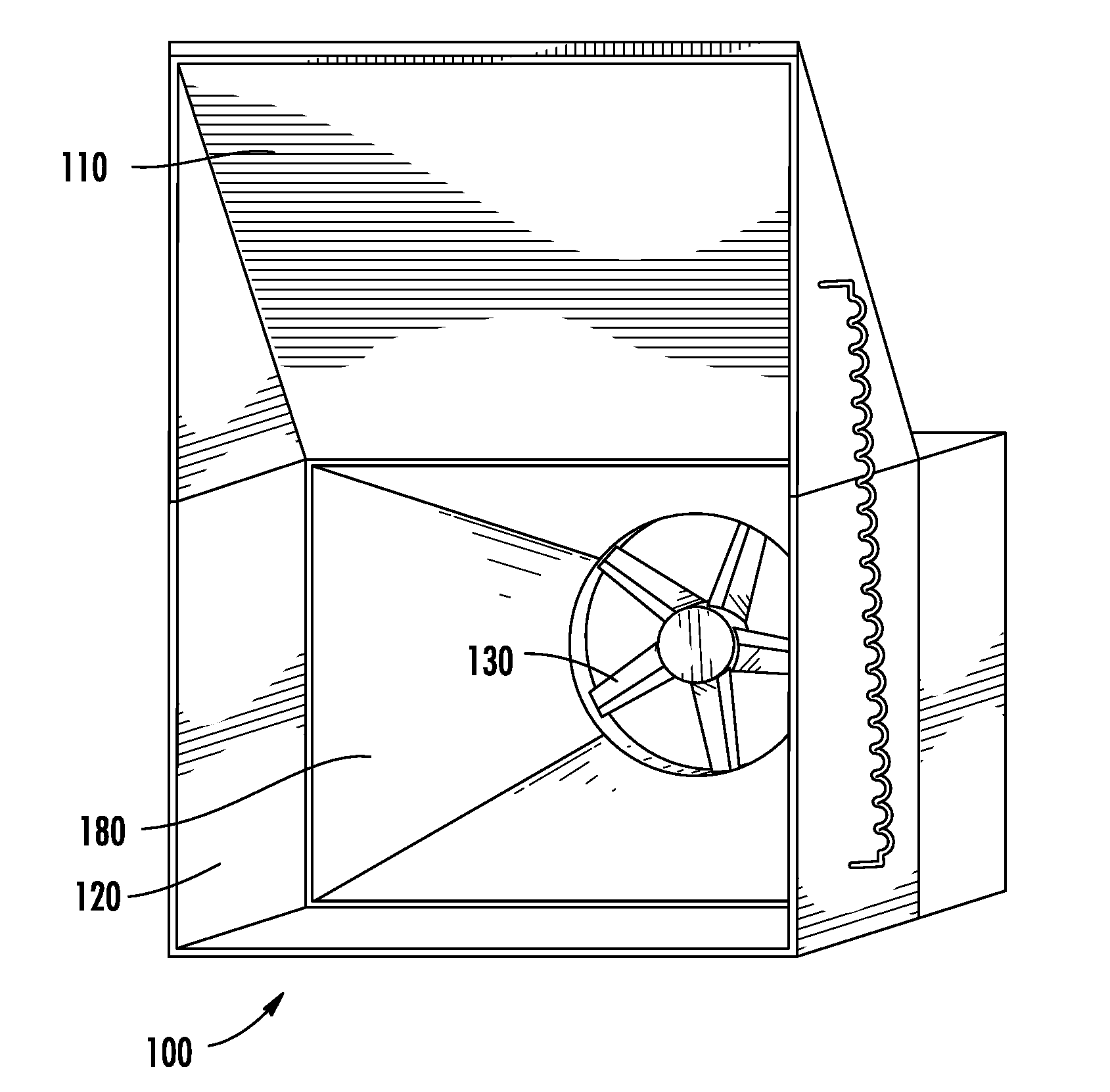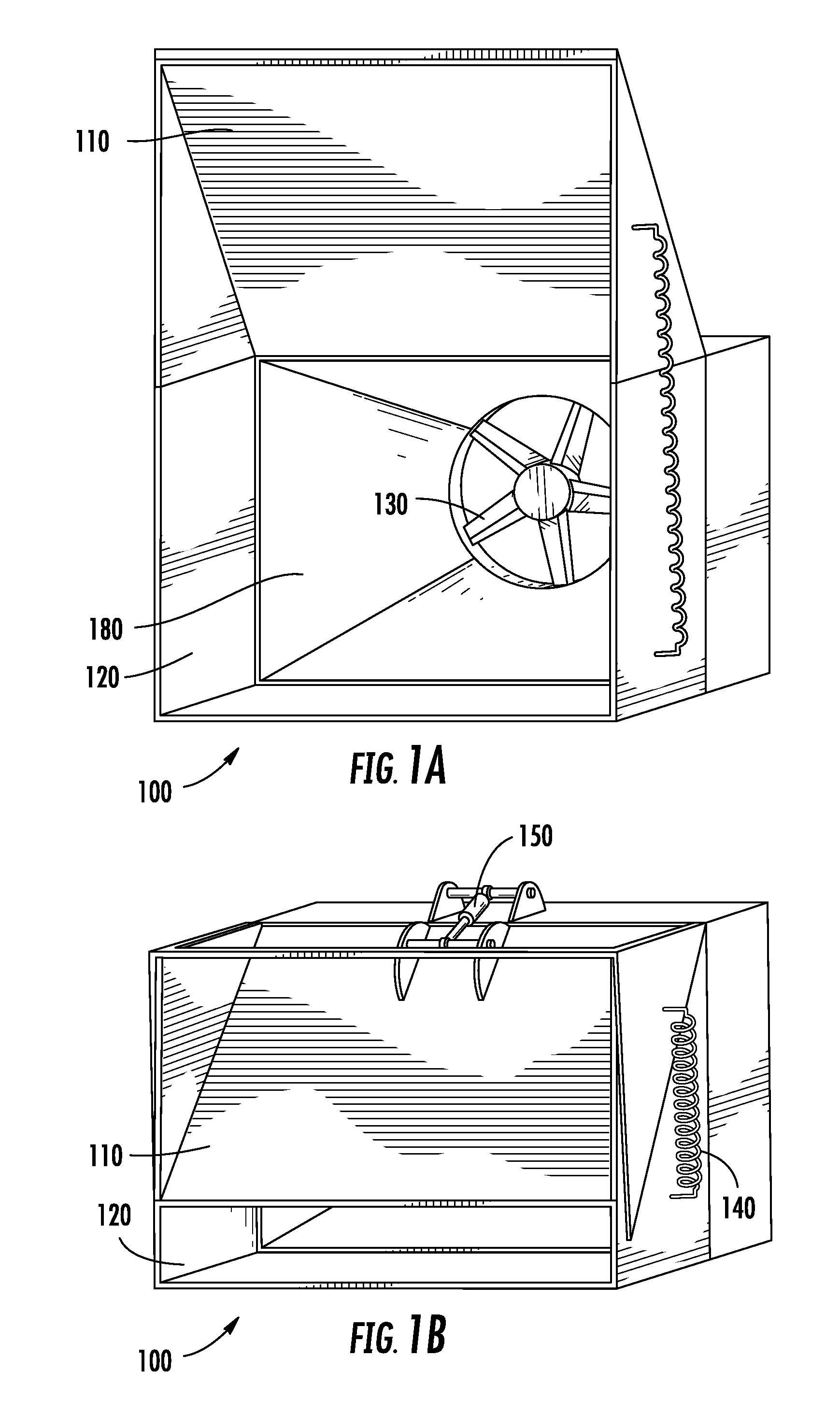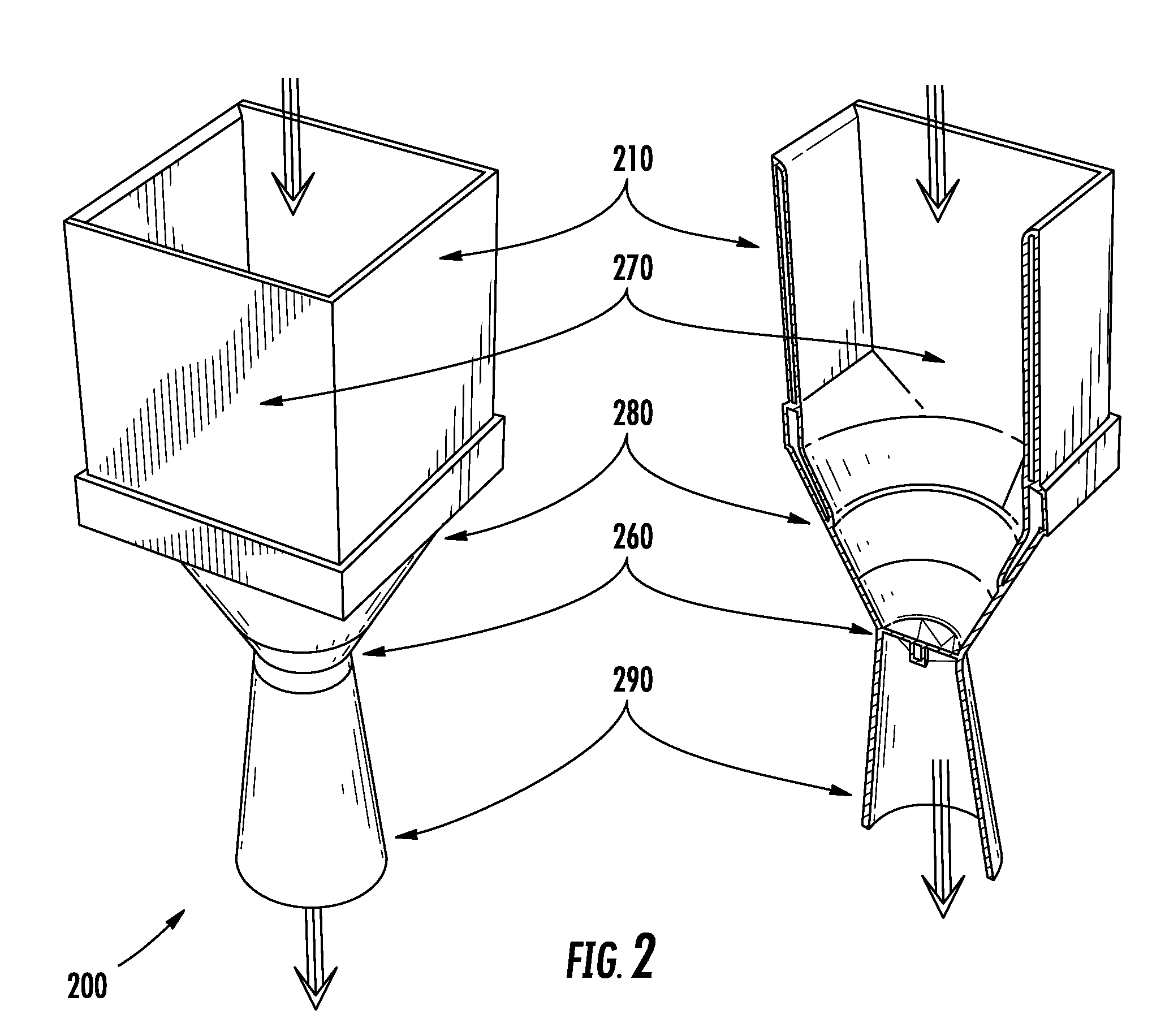Methods, systems, and devices for energy generation
a technology of energy generation and energy harvesting, applied in the direction of electric generator control, renewable energy generation, greenhouse gas reduction, etc., can solve the problems of increasing the acquisition and maintenance cost of real estate, affecting the amount and/or intensity of resources that can be harnessed and converted into electrical energy, and affecting the efficiency of the electrical energy conversion process. , to achieve the effect of reducing the cost and complexity of the transformer, reducing the optimal and/or constant speed of the internal fan, and reducing the interference back
- Summary
- Abstract
- Description
- Claims
- Application Information
AI Technical Summary
Benefits of technology
Problems solved by technology
Method used
Image
Examples
Embodiment Construction
[0052]Reference will now be made in detail to various exemplary embodiments of the invention. It is to be understood that the following detailed description is presented for the purpose of describing certain embodiments in detail. Thus, the following detailed description is not to be considered as limiting the invention to the embodiments described. Rather, the true scope of the invention is defined by the claims.
[0053]Additionally, the following embodiments describe methods, systems, and devices for energy generation using wind as the fluid energy source. Each of the embodiments described is equally suitable for any fluid energy source, including, for example, water, whether or not such embodiments could or should be modified to suit a particular fluid-based application.
[0054]FIGS. 1 and 2 include inlets for controlling fluid flow at the fan face of a turbine. The adjustable inlets provide for the capture of an appropriate amount of air to generate relatively constant power output ...
PUM
 Login to View More
Login to View More Abstract
Description
Claims
Application Information
 Login to View More
Login to View More - R&D
- Intellectual Property
- Life Sciences
- Materials
- Tech Scout
- Unparalleled Data Quality
- Higher Quality Content
- 60% Fewer Hallucinations
Browse by: Latest US Patents, China's latest patents, Technical Efficacy Thesaurus, Application Domain, Technology Topic, Popular Technical Reports.
© 2025 PatSnap. All rights reserved.Legal|Privacy policy|Modern Slavery Act Transparency Statement|Sitemap|About US| Contact US: help@patsnap.com



